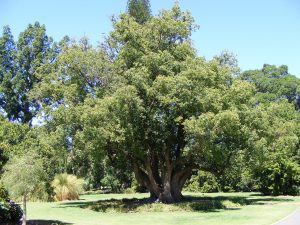
EO Profile: HoWood (Ho Leaf, Ho-sho)
EO Profile : HoWood (Ho Leaf, Ho-sho)
An excellent replacement for endangered Rosewood. Similar in properties and smell. This Ho Wood is the most commonly used of 3 varieties.
Botanical name: Cinnamomum camphora (linalool CT)
Botanical family: Lauraceae
Country of Origin: Native to China, Japan, Taiwan, and Vietnam
History: “C.. camphora is cultivated for camphor and timber production. The production and shipment of camphor, in a solid, waxy form, was a major industry in Taiwan prior to and during the Japanese colonial era (1895–1945). It was used medicinally and was also an important ingredient in the production of smokeless gunpowder and celluloid. Primitive stills were set up in the mountainous areas in which the tree is usually found. The wood was chipped; these chips were steamed in a retort, allowing the camphor to crystallize on the inside of a crystallization box after the vapour had passed through a cooling chamber. It was then scraped off and packed out to government-run factories for processing and sale. Camphor was one of the most lucrative of several important government monopolies under the Japanese.” (Wikipedia)
General Description of Habitat, Growth, Plant and it’s Herbal Qualities: ”Cinnamomum camphora is native to China south of the Yangtze River, Taiwan, southern Japan, Korea, and Vietnam, and has been introduced to many other countries.It grows up to 20–30 m (66–98 ft) tall…The leaves have a glossy, waxy appearance and smell of camphor when crushed. In spring, it produces bright green foliage with masses of small white flowers. It produces clusters of black, berry-like fruit around 1 cm (0.39 in) in diameter. Its pale bark is very rough and fissured vertically.” (Wikipedia)
Plant part typically used: Leaves
Common method of extraction: Steam-distilled
Oil color: Clear
Oil consistency: Medium
Perfumery note: Middle
Strength of initial aroma: Medium
Aromatic description: Woody, floral, gently camphorous
Shelf life: 2 years
Organoleptic Description (personal uses): mildly camphorous feeling on the skin when using a topical dilution. It is penetrating, warming and relaxing to muscles and painful areas. Very relaxing and pleasant. Helps to clear the nose as well.
Therapeutic Properties: analgesic, antibacterial, anti-inflammatory, antimicrobial, antispasmodic, hypo-tension, disinfectant, immuno-stimulant, insecticidal, sedative
Physical Applications: colds & flu, menstrual cramps, muscle spasms, wounds, cuts, eczema, acne, reduces inflammation, helps cut gas in the digestive tract and improves digestion, increases libido
Emotional/Mental Applications: peaceful and relaxing, stress and anxiety
Key use: Muscle soreness, relaxation (a good substitute for lavender), encourages feelings of peace.
Major Constituents: Linalool, 1,8 Cineole, nerolidolol
Blends well with: Basil, cajeput, Cedarwood, coriander, chamomile, frankincense, geranium, lavender, rose Otto, rose maroc, sandalwood, sweet orange, tangerine, ylang ylang
Fun Facts: “The wood has traditionally been used for the handles of Japanese swords and knives because it is soft and will not scratch the blades. Most often used nowadays for ornamental parts of houses and cabinet making. It is very similar to Rosewood but produced from a much more renewable source”. (MountainRoseherbs.com)
Specific Safety info:
Pregnancy and Labor Yes
Breastfeeding Yes
Infants under 2 No
Children 2-6 Yes
Pets Dogs, No. Cats, No.
Phototoxic: no
General Safety Info: Essential Oil Safety advises no dose limits since it contains large amounts of linalool and nerolidol. They suggest adding an antioxidant.
Sources for info: Essential Oil Safety by Robert Tisserand and Rodney Young, pp 304-305; AromaWeb.com; Essentialthree.com; MountainRoseHerbs.com; other various trusted sources on the internet. Children’s info: PlantTherapy.com
This website is kept uncluttered and lovely by your purchasing of our natural products. If you’d like to see what we sell visit www.jordanscrossing.net/store
Disclaimer: The statements on this page have not been evaluated by the Food and Drug Administration. These products are not intended to diagnose, treat, cure or prevent any disease. Keep out of reach of children. If pregnant, nursing, taking medications, or if you have a medical condition consult a physician prior to use.
Remember, it’s unwise to use essential oils undiluted.
